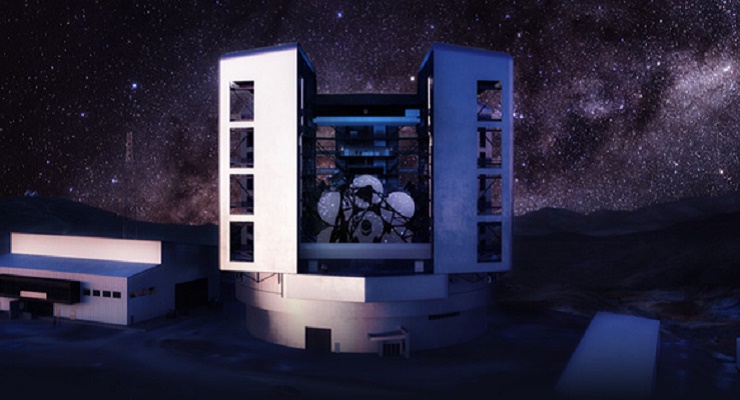
The Giant Magellan Telescope has received official approval from the National Science Foundation to advance into its Major Facilities Final Design Phase, marking a critical milestone toward becoming eligible for federal construction funding.
The Giant Magellan Telescope is the work of the GMTO Corporation, a 501(c)(3) nonprofit and international research consortium headquartered in Pasadena.
The decision positions one of the world’s largest optical telescopes closer to completion and represents a significant step in maintaining American leadership in ground-based astronomy. The telescope is already 40% under construction with nearly $1 billion in private funding – the largest private investment ever made in ground-based astronomy.
“What a great moment for the future of American astronomy,” said Dr. Robert Shelton, president of the Giant Magellan Telescope. “The NSF’s decision to advance us into its Final Design Phase reaffirms the strength of our observatory and the decades of preparation by our dedicated team.”
The Giant Magellan is built by an international consortium of 15 universities and research institutions, including the University of Arizona, Carnegie Institution for Science, The University of Texas at Austin, and Harvard University.
Major components are being manufactured across 36 states, with advanced optics produced in Arizona, science instruments in Texas, and the telescope mount structure in Illinois. At the Chile site, infrastructure progress includes utilities, roads, and a fully excavated foundation.
The telescope will be located in Chile’s Atacama Desert, offering more than 300 clear nights annually and direct access to the southern sky and galactic center of the Milky Way.
“This is more than an investment in a telescope,” said Dr. Walter Massey, board chair of the GMTO Corporation and former NSF director. “It is a strategic necessity for the United States to maintain leadership in astrophysics, engineering, and artificial intelligence.”
The observatory will work with other U.S. investments in Chile, including the Vera C. Rubin Observatory. The Rubin Observatory will conduct an all-sky survey to discover cosmic events, while the Giant Magellan’s greater sensitivity and resolution will investigate these discoveries.
Using seven of the world’s largest mirrors, the 25.4-meter telescope will produce detailed images of the universe to uncover cosmic mysteries of dark matter, investigate chemical element origins, and search for signs of life on distant planets.
With federal construction funding, the telescope is expected to be completed in the 2030s.


















